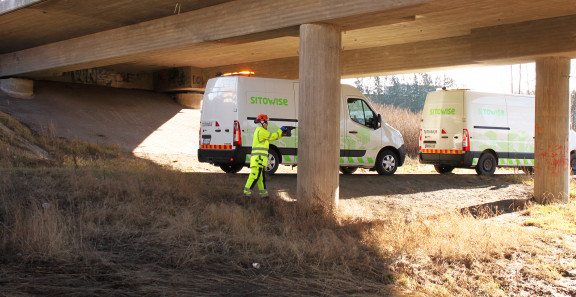Summer dries bridge surfaces and ushers bridge inspectors out of the office and into the field. Sitowise undertook a larger-than-usual volume of this type of work during summer, as we have been joined by specialists from SiltaExpertti as the result of a merger.
Bridge inspections throughout the seasons
State-owned bridges in Finland must be inspected at five-year intervals. This involves a general inspection that is based on the inspector’s visual observations. These are exactly the kind of observations that require the dry conditions afforded by the summer months, so that the inspector is able to detect any need for repairs. “Snow, ice and frost cover up damage, which means that the optimal weather conditions are during the summer,” says Mikko Rauhanen, who heads up the bridge inspection services group.
Errors are minimised by carrying out inspections in optimal weather conditions.
- Mikko Rauhanen, Bridges and Structures, Group Manager
Sitowise carries out bridge inspections all across Finland. Rauhanen lists some of the most recent destinations: Savukoski, Kemijärvi, Tornio, Imatra and Hamina. A lot of work is done during the best time of the year. “In the winter, we concentrate on reporting and spend more time at our offices in Raisio and Espoo,” says Rauhanen.
Special inspections get under the surface
After the general inspection, it is time to really get under the bridge’s skin with a special inspection. In addition to visual observations, more detailed examinations are made by drilling holes into the structures and examining their interiors. Any necessary repairs will be commissioned on the basis of the special inspection.
Most bridges in Finland are made of concrete. The most common reason for repairing a concrete bridge is the poor condition of waterproofing on the bridge deck, and street salting accelerates the erosion of road bridges. A bridge’s edge beams often require repair as well.
“The bridge’s railings are connected to the edge beams. So if the edge beams are in poor condition, this will loosen the railings and pose a threat to road safety,” says Jani Valokoski, Group Manager, Bridge Repair Design.
Bridge lifecycles are learning tools for designers
After inspection, any bridges that require repairs end up on the repair designer’s desk. To ensure an unbroken chain, the inspectors and designers regularly check in with each other to facilitate mutual learning and to increase their understanding of this demanding specialist area. “You should be fully familiar with a bridge’s entire lifecycle regardless of which stage you yourself are working on,” says Rauhanen.
“It’s important for designers to see a variety of different bridges. This enables them to gain practical experience of which structures and solutions work in which situations. It enhances their professional skills and enables them to make better plans for both repairs and new construction,” says Valokoski.
A good bridge designer knows how the various technical solutions work throughout a bridge’s entire lifecycle. And that’s a skill best learnt in the field.
-Jani Valokoski, Bridges and Structures, Group Manager
New bridges and other infrastructure are naturally built to be used. Material requirements and design solutions for new structures are improved on the basis of the damage and problems that are detected during inspections.
Naturally, the goal is for new structures to remain in better condition and require fewer repairs than their predecessors. The Finnish Transport Infrastructure Agency and its predecessors have, in collaboration with cities, done a great deal of work in this area. Guidelines for inspections, repairs and new designs are continually updated, and designers are being systematically guided in the right direction.
Cross-disciplinary bridge expertise
The expertise of bridge inspectors and designers can also be utilised for other speciality structures. Their professional skills can be transferred to the inspection and repair of sea marks, quays, masts and other infrastructure.
Building renovations also provide employment for bridge inspectors. In their laboratories, they carry out experiments such as tensile testing and chloride studies to support building renovation planning.
We still have plenty more to offer in this kind of multidisciplinary cooperation, says Rauhanen.
